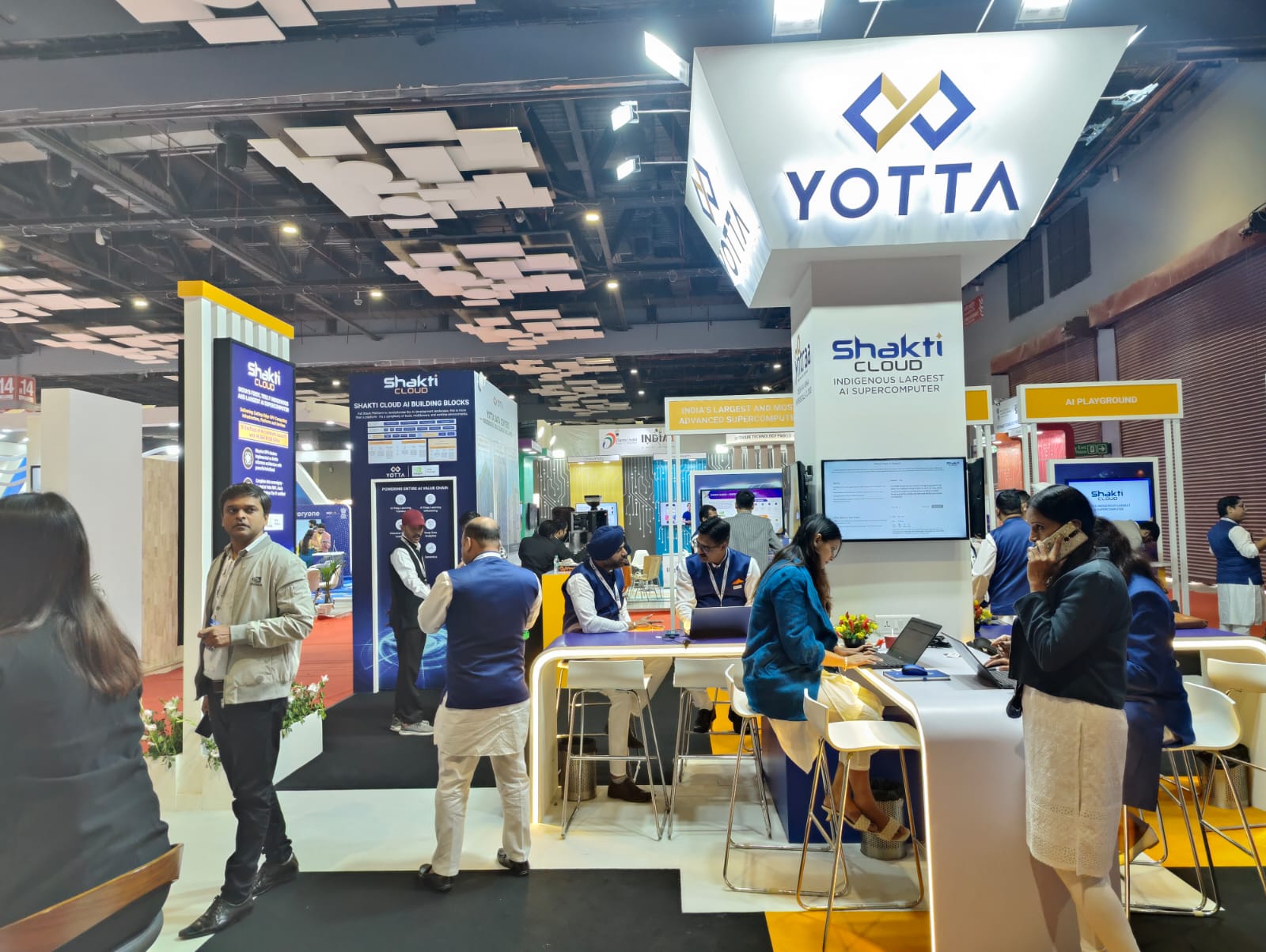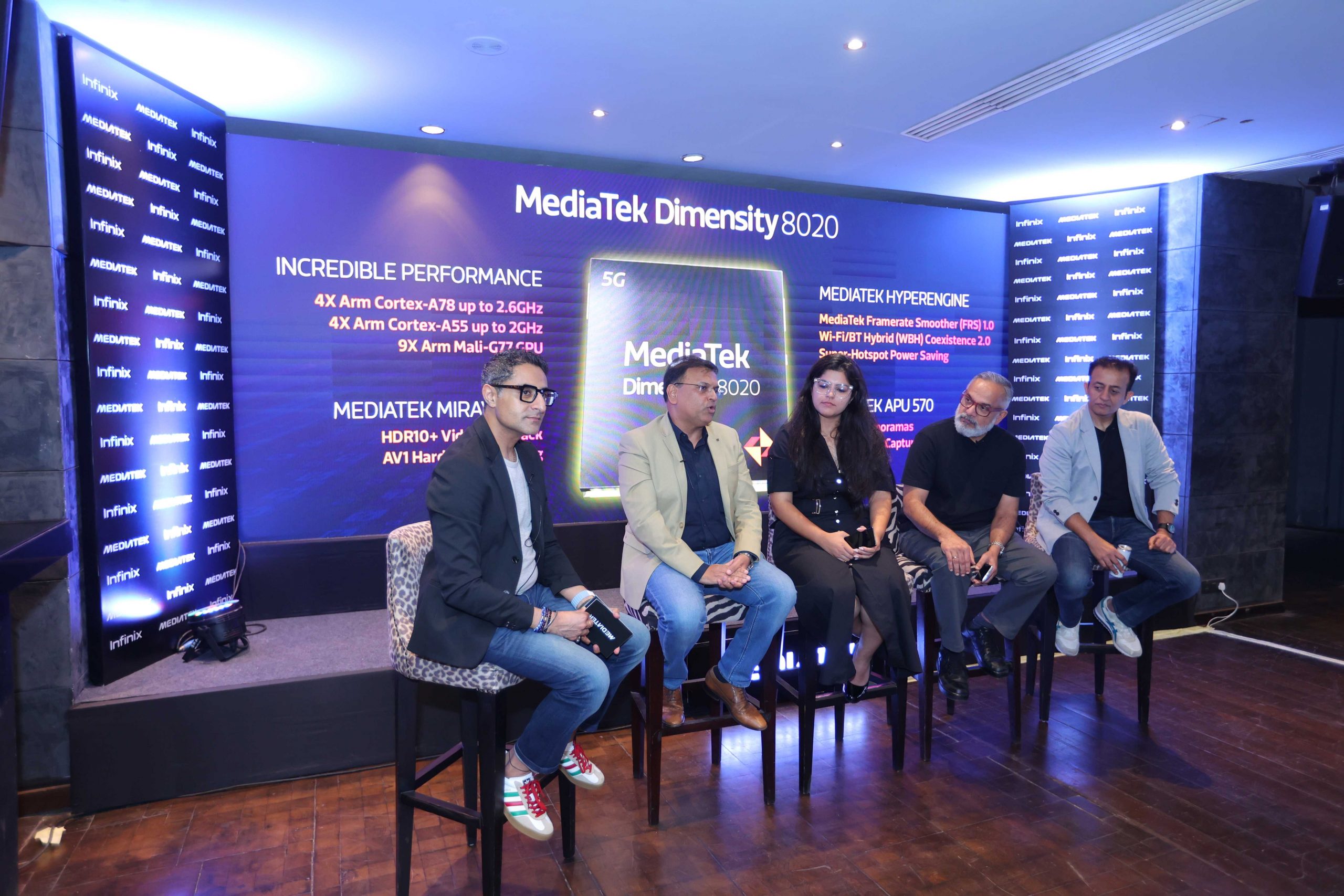News
Weaponizing of intelligent edge will dramatically alter speed and scale of future cyberattacks: FortiGuard Labs

NEW DELHI: Fortinet has unveiled predictions from the FortiGuard Labs global threat intelligence and research team about the threat landscape for 2021 and beyond.
• These predictions reveal strategies the team anticipates cybercriminals will employ in the near future, along with recommendations that will help defenders prepare to protect against these oncoming attacks.
• Cyber adversaries leveraging intelligent edges, 5G-enabled devices, and advances in computing power will create a wave of new and advanced threats at unprecedented speed and scale. In addition, threat actors will continue to shift significant resources to target and exploit emerging edge environments, such as remote workers, or even new OT edge environments, rather than just targeting the core network.
• For defenders, it is critical to plan ahead now by leveraging the power of artificial intelligence (AI) and machine learning (ML) to speed threat prevention, detection, and response. Actionable and integrated threat intelligence will also be important to improve an organization’s ability to defend in real time as the speed of attacks continues to increase.
• Highlights of the predictions follow, but for a more detailed view of the predictions and key takeaways, visit the blog.
The Intelligent Edge Is an Opportunity and a Target
Over the past few years, the traditional network perimeter has been replaced with multiple edge environments, WAN, multi-cloud, data center, remote worker, IoT, and more, each with its unique risks. One of the most significant advantages to cybercriminals in all of this is that while all of these edges are interconnected many organizations have sacrificed centralized visibility and unified control in favor of performance and digital transformation. As a result, cyber adversaries are looking to evolve their attacks by targeting these environments and will look to harness the speed and scale possibilities 5G will enable.
• Trojans Evolve To Target the Edge: While end-users and their home resources are already targets for cybercriminals, sophisticated attackers will use these as a springboard into other things going forward. Corporate network attacks launched from a remote worker’s home network, especially when usage trends are clearly understood, can be carefully coordinated so they do not raise suspicions. Eventually, advanced malware could also discover even more valuable data and trends using new EATs (Edge Access Trojans) and perform invasive activities such as intercept requests off the local network to compromise additional systems or inject additional attack commands.
• Edge-enabled Swarm Attacks: Compromising and leveraging new 5G-enabled devices will open up opportunities for more advanced threats. There is progress being made by cybercriminals toward developing and deploying swarm-based attacks. These attacks leverage hijacked devices divided into subgroups, each with specialized skills. They target networks or devices as an integrated system and share intelligence in real time to refine their attack as it is happening. Swarm technologies require large amounts of processing power to enable individual swarmbots and to efficiently share information in a bot swarm. This enables them to rapidly discover, share, and correlate vulnerabilities, and then shift their attack methods to better exploit what they discover.
• Social Engineering Could Get Smarter: Smart devices or other home-based systems that interact with users, will no longer simply be targets for attacks, but will also be conduits for deeper attacks. Leveraging important contextual information about users including daily routines, habits, or financial information could make social engineering-based attacks more successful. Smarter attacks could lead to much more than turning off security systems, disabling cameras, or hijacking smart appliances, it could enable the ransoming and extortion of additional data or stealth credential attacks.
• Ransoming OT Edges Could Be a New Reality: Ransomware continues to evolve, and as IT systems increasingly converge with operational technology (OT) systems, particularly critical infrastructure, there will be even more data, devices, and unfortunately, lives at risk. Extortion, defamation, and defacement are all tools of the ransomware trade already. Going forward, human lives will be at risk when field devices and sensors at the OT edge, which include critical infrastructures, increasingly become targets of cybercriminals in the field.
Innovations in Computing Performance Will Also Be Targeted
Other types of attacks that target developments in computing performance and innovation in connectivity specifically for cybercriminal gain are also on the horizon. These attacks will enable adversaries to cover new territory and will challenge defenders to get ahead of the cybercriminal curve.
• Advanced Cryptomining: Processing power is important if cybercriminals want to scale future attacks with ML and AI capabilities. Eventually, by compromising edge devices for their processing power, cybercriminals would be able to process massive amounts of data and learn more about how and when edge devices are used. It could also enable cryptomining to be more effective. Infected PCs being hijacked for their compute resources are often identified since CPU usage directly impacts the end-user’s workstation experience. Compromising secondary devices could be much less noticeable.
• Spreading Attacks from Space: The connectivity of satellite systems and overall telecommunications could be an attractive target for cybercriminals. As new communication systems scale and begin to rely more on a network of satellite-based systems, cybercriminals could target this convergence and follow in pursuit. As a result, compromising satellite base stations and then spreading that malware through satellite-based networks could give attackers the ability to potentially target millions of connected users at scale or inflict DDoS attacks that could impede vital communications.
• The Quantum Computing Threat: From a cybersecurity perspective, quantum computing could create a new risk when it eventually is capable of challenging the effectiveness of encryption in the future. The enormous compute power of quantum computers could render some asymmetric encryption algorithms solvable. As a result, organizations will need to prepare to shift to quantum-resistant crypto algorithms by using the principle of crypto agility, to ensure the protection of current and future information. Although the average cybercriminal does not have access to quantum computers, some nation-states will, therefore the eventual threat will be realized if preparations are not made now to counter it by adopting crypto agility.
AI Will Be Critical To Defending Against Future Attacks
As these forward-looking attack trends gradually become reality, it will only be a matter of time before enabling resources are commoditized and available as a darknet service or as part of open-source toolkits. Therefore, it will take a careful combination of technology, people, training, and partnerships to secure against these types of attacks coming from cyber adversaries in the future.
• AI Will Need To Evolve: The evolution of AI is critical for future defense against evolving attacks. AI will need to evolve to the next generation. This will include leveraging local learning nodes powered by ML as part of an integrated system similar to the human nervous system. AI-enhanced technologies that can see, anticipate, and counter attacks will need to become reality in the future because cyberattacks of the future will occur in microseconds. The primary role of humans will be to ensure that security systems have been fed enough intelligence to not only actively counter attacks but actually anticipate attacks so that they can be avoided.
• Partnerships Are Vital for the Future: Organizations cannot be expected to defend against cyber adversaries on their own. They will need to know who to inform in the case of an attack so that the “fingerprints” can be properly shared and law enforcement can do its work. Cybersecurity vendors, threat research organizations, and other industry groups need to partner with each other for information sharing, but also with law enforcement to help dismantle adversarial infrastructures to prevent future attacks. Cybercriminals face no borders online, so the fight against cybercrime needs to go beyond borders as well. Only by working together will we turn the tide against cybercriminals.
• Enabling Blue Teams: Threat actor tactics, techniques, and procedures (TTPs), researched by threat intelligence teams, such as threat actor playbooks, can be fed to AI systems to enable the detection of attack patterns. Similarly, as organizations light up heatmaps of currently active threats, intelligent systems will be able to proactively obfuscate network targets and place attractive decoys along attack paths. Eventually, organizations could respond to any counterintelligence efforts before they happen, enabling blue teams to maintain a position of superior control. This sort of training gives security team members the ability to improve their skills while locking down the network.
News
Yotta’s Cloud Data Center in GIFT City, Gujarat goes live

NEW DELHI: Yotta Data Services, an end-to-end Digital Transformation service provider, has announced that its state-of-the-art data centre facility, “Yotta G1”, located in GIFT city, Gandhinagar is ready for service (RFS).
The opening of this data center marks the debut of Yotta in Gujarat and progresses the company’s mission to provide digital services in India’s high-growth markets.
G1 is Yotta’s fifth data center facility in the country. It joins four large operational data centers, two of which, at Navi Mumbai and Greater Noida are part of hyperscale campuses. Yotta G1 is uniquely located inside the International Financial Services Center (IFSC) zone of Gandhinagar’s Gujarat International Finance Tec-City (GIFT city).
G1 represents an investment of more than INR 500 cr. over five years across critical non-IT and IT / Cloud / AI compute infrastructure. The data center has a capacity of over 350 high-density racks and 2 MW power (which can be scaled further as per demand). The facility is designed to meet the most demanding digital needs of its customers, who may be located within GIFT City or anywhere in the world, by seamlessly delivering fault-tolerant facility infrastructure, high-performance Cloud compute and storage infrastructure, advanced physical and cyber security, unmatched connectivity, and steadfast sustainability.
For large global enterprises operating in the GIFT City IFSC zone, the G1 data center functions as a potential data embassy, whereby their data stored is subject to the laws and regulations of their home country, thus allowing them to maintain sovereignty over their data, even when stored in India. By storing data in a physically different location, global enterprises can ensure continuity of operations in case of major disruptions within their borders. The data center’s location also ensures compliance with the IFSC regulations, providing businesses in the zone with distinct advantages like free foreign exchange convertibility, a liberalised regulatory environment, and business-friendly policies. It also helps enterprises adhere to IFSC’s compliance requirements, including being mandated to host their data within the IFSC zone.
Commenting on the announcement, Darshan Hiranandani, Co-founder and Chairman, Yotta Data Services, said, “The state of Gujarat, with GIFT City, has been at the forefront of providing a viable and sustainable platform for global businesses to set up base in India. The setting up of the IFSC zone is a further testament to their vision for financial services companies. We are proud to support this vision of the Gujarat government with a state-of-the-art data center within the IFSC zone, providing the latest and best in cutting-edge technologies to help businesses set up and scale their businesses while also adhering to all regulatory requirements.”
Adding to this, Sunil Gupta, Co-Founder, MD & CEO, Yotta Data Services, said, “Yotta’s G1 marks a pivotal milestone in delivering high-end data center, Cloud, AI compute, storage, connectivity and cybersecurity services to enterprises both on a global and local scale in the Gujarat region. Besides serving the domestic enterprises within and outside GIFT City, our data center shall serve as a potential data embassy for global enterprises, enabling them to adhere to their respective country’s laws while offering a dependable and secure locale for offshore data storage.”
G1 data centre stands distinct in GIFT city for being a data center offering more than just colocation services. True to Yotta’s stature as the end-to-end digital transformation partner of choice for enterprises, G1 brings forth a suite of key features, ranging from advanced data security and customised business solutions to an indigenous hyperscale cloud offering, AI-GPU compute offering, state-of-the-art infrastructure, cybersecurity expertise, seamless integration with managed IT services, 24/7 customer support, cost optimisation, and an overall competitive edge.
This announcement follows on the heels of Yotta’s recent launch of its cloud services – Shakti Cloud and Yntraa Cloud. Powered by NVIDIA’s top-of-the-line GPUs, Shakti Cloud is India’s largest & fastest AI-HPC supercomputer, delivering cutting-edge GPU computing infrastructure, platforms, and services, including Infrastructure as a Service, Platform as a Service, and Software as a Service. Yntraa Cloud, on the other hand, is a truly indigenous hyperscale cloud platform at par with global cloud platforms, offering an exhaustive range of cloud products and services.
News
Optiemus Infracom joins hands with Corning International

NEW DELHI: Domestic contract manufacturer Optiemus Infracom has entered into a joint venture with US-based speciality glassmaker Corning International to set up India’s first manufacturing facility for producing high-quality finished cover glass parts for the mobile consumer electronics industry.
The collaboration between both the companies will help expand India’s electronics manufacturing ecosystem, as the Indian government strengthens its Make in India initiative. As a part of the joint venture, the companies strategically aim to set up a world-class manufacturing facility in India, powered by cutting-edge technologies and processes.
Driven by a shared commitment to innovation and technological excellence, this collaboration will pave the way for the manufacturing of “Made in India” finished cover glass parts for use in mobile consumer electronic devices, and other cover glass applications, to meet the needs of next-generation mobile consumer electronic devices.
The joint venture signifies a powerful synergy between Optiemus’s deep domestic industry and manufacturing knowledge of electronics and telecom market and Corning’s globally-acclaimed expertise in advanced glass technology. By combining these strengths, the joint venture aspires to not only establish cover glass manufacturing capabilities and capacity in India, but also to contribute significantly to the creation of jobs and skill development within India’s thriving technology sector, the companies said in a statement.
Ashok Kumar Gupta, Chairman, Optiemus Infracom, said, “It is a matter of great pride for us to actively contribute to the growing manufacturing ecosystem in the country. With this joint venture, initiated in line with the vision of Hon’ble Prime Minister of India of ‘Make in India’ programme and the “Atmanirbhar Bharat” initiative, we are committed to make available world-class high-quality products for global and local brands.”
“Embarking on this new journey, we intend to emerge as one of the top manufacturers of finished cover glass parts for use in mobile consumer electronic devices in the next five years. Our collective expertise in innovation, design, and manufacturing, will provide holistic solutions for the brands,” Gupta added.
5g
MediaTek Catch-up with Tech: Infinix Zero 30 5G with Dimensity 8020 launched

NEW DELHI: Chipset maker MediaTek, which claims to power more than two billion connected devices every year, hosted ‘Catch-up with Tech’ in collaboration with handset brand Infinix on August 28 to share insightful and engaging conversations about the new-age smartphones and innovative technologies powering everyday lives.
The meet-up threw the spotlight on the MediaTek Dimensity Auto, Satellite solutions and Generative AI along with an extensive showcase of newly-launched Infinix Zero 30 5G powered by MediaTek Dimensity 8020, Infinix GT 10 Pro powered by MediaTek Dimensity 8050, and Infinix QLED TV powered by MediaTek.
In terms of specs, the Infinix Zero 30 5G is tailored for young storytellers and creators, featuring the first-ever smartphone to deliver 4K 60fps video recording from its 108 MP OIS rear camera and ultra-high resolution 50MP front camera. The Zero 30 series powered by MediaTek Dimensity 8020 is said to be a game changer for the front camera vlogging experience along with being the slimmest curved AMOLED smartphone in the segment with glass and a vegan leather back panel. It also claims to be one of the most premium-looking devices in the segment.
The event witnessed a panel discussion moderated by Anuj Sidharth, Deputy Director Marketing & Corporate Communications, MediaTek and included expert panelists from Infinix, MediaTek and two renowned professional photographers.
“With the fifth edition of Catch-up with Tech, we aim to bring consumers closer to the technology and enable them to make informed buying decisions based on their diverse needs. In collaboration with Infinix, this meet-up is in-line with MediaTek’s vision of technology democratization and making innovative technology accessible to everyone,” said Anku Jain, Managing Director, MediaTek India. “The MediaTek Dimensity 8020 in Infinix Zero 30 5G brings faster displays, brilliant cameras and ultra-fast performance. Further, MediaTek Imagiq technologies enrich the capture experience by combining dedicated AI, imaging processors and accelerators to provide incredible results,” he added.
Anish Kapoor, CEO, Infinix Mobile India, said, “Featuring India’s first 50MP 4K 60 fps video recording, Infinix Zero 30 5G is primed to redefine smartphone imaging capabilities, setting a new standard for the creators and vlogging enthusiasts. Our collaboration with MediaTek has played a pivotal role in shaping our exceptional smartphone portfolio, and the Zero 30 5G stands as evidence of our unwavering commitment to innovation and delivering unmatched experiences to our users. The display and design of the device represent a leap forward in smartphone technology. As Infinix Zero 30 5G hits the shelves, we are positive that our customers will find this new offering as exhilarating as we do, further empowering creators to capture their story like never before.”
Radhakrishnan Chakyat, a photography evangelist, founder and host of Pixel Viilage, said, “Infinix Zero 30 5G smartphone powered by MediaTek Dimensity 8020 chipset has amazing hardware features, an excellent camera, dual-view video mode and is primed for optimal content creation and saves a tremendous amount of editing time.”
Aarzoo Khurana, a wildlife photographer, said, “Over the last few days, I clicked various pictures and recorded a few videos with the newly-launched Infinix Zero 30 5G powered by MediaTek Dimensity 8020, and the experience has been truly inspiring. Infinix’s smartphone’s OIS feature helps content creators click shake-free pictures and the front camera, which is extremely sharp and detailed, enables content creators to click countless selfies.”





